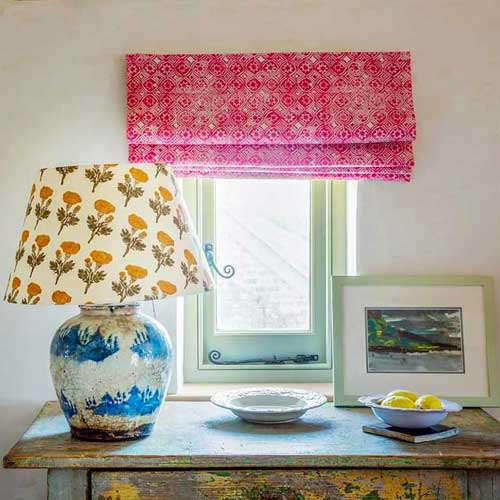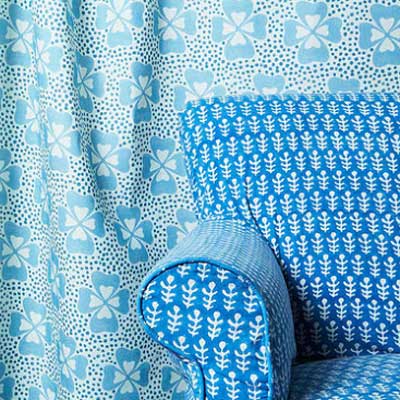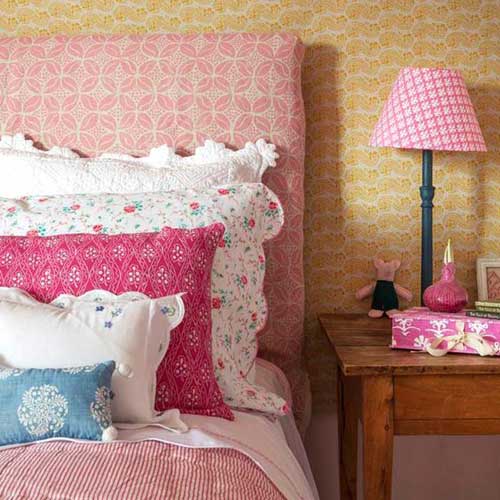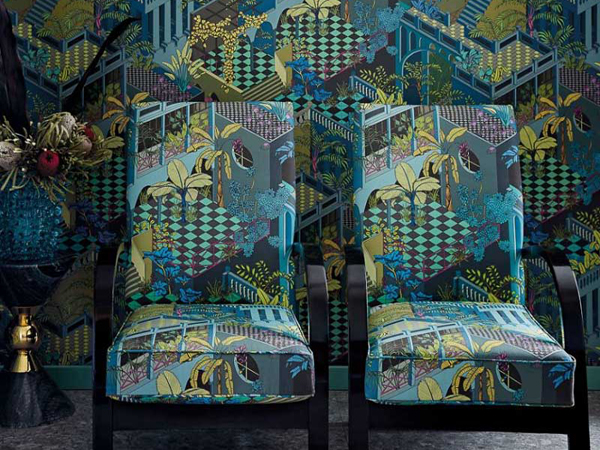Block print fabric is experiencing a comeback with brand new designers embracing this traditional printing technique. Creating fresh and modern patterns as well as rediscovering traditional prints, designers are breathing new life into this age-old printing method. Alongside popular interior designers such as Kit Kemp raising the profile of block print textiles through her influential hotel schemes, we have seen this design trend grow with more and more people choosing to feature these beautiful materials in their homes.
A kaleidoscope of colour and pattern, block print fabrics are easily embraced into your home as their designs are so versatile and their colourways so plentiful. The prettiest trend the interiors world has seen for a while, hand block fabrics look wonderful as curtains, blinds, headboards, cushions and upholstered furnishings. Often printed on natural cottons and linens, their hardwearing properties and textured finishes make them a popular choice when decorating a room.
The beauty of block print fabric is in its simplicity. Each cloth is created as a singular piece with the hand printing technique resulting in minor imperfections across the material. These perfect imperfections cannot be replicated from one piece to the next, so each print becomes distinctively unique. The fabrics contain traces of their makers and it is this authenticity and individualism that makes them so charming.
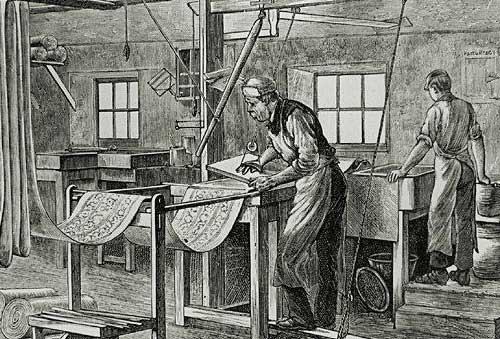

The History of Block Print Fabrics
Hand block printed textiles is a popular technique that has been found to be practiced across the world. Its origins are hard to trace but the earliest surviving examples can be found in China and date back as early as 220. Other surviving examples have been found across North-Western regions of South Asia and it was here, during the Mughal rule in India that block printing flourished.
With the introduction of delicate paisleys and floral motifs that we still know and love today, block printed textiles were bought across to Europe markets during the 17th century. The British were quick to adopt the hand block technique and printers were soon creating their own block printed cottons. Featuring motifs inspired by the countryside including native flowers, trees and animals; these fabrics better suited the tastes of the British market.
Some of the finest examples of hand cut wood block printing in Britain are those of William Morris. As he mastered the technique, his stylised evocations of natural forms became more interwoven and exuberant, requiring complex printing techniques and the use of multiple colours.
Using carved pear woodblocks loaded with natural, mineral-based dyes, designs were painstakingly hand block printed to create a seamless repeat. It was this desire for perfection that made him arguably the most celebrated designer of the Arts & Crafts movement.
As Morris & Co continue to print the iconic William Morris fabrics and wallpapers designs to meet the demands of present interior fashions, they now combine digital technology with modern printing techniques to ensure that patterns still embody the essence of their hand block originals.
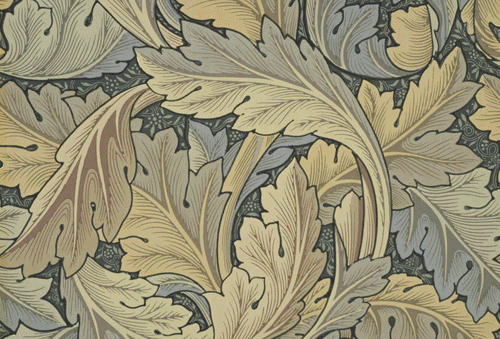

Block Printing on Fabric Step by Step
Block-printed fabrics are made by hand carving a design into wooden blocks. These are then covering with dye or ink and are pressed onto the cloth to transfer the design. It is important to ensure that your placement is firm and precise to ensure a crisp print and a smooth distribution of ink over the fabric.
Depending on the design, printers will use the same block to repeat the patterns across the cloth or will switch to another block with a different motif to continue the design. If the pattern has an overlapping design, the first layer is applied and fully dried before a second print is applied. This helps to ensure that each individual shape is defined. Once your design is complete, printed fabrics are hung out to dry. Some fabric paints require the material to be ironed on the reverse to ensure that the design is set.
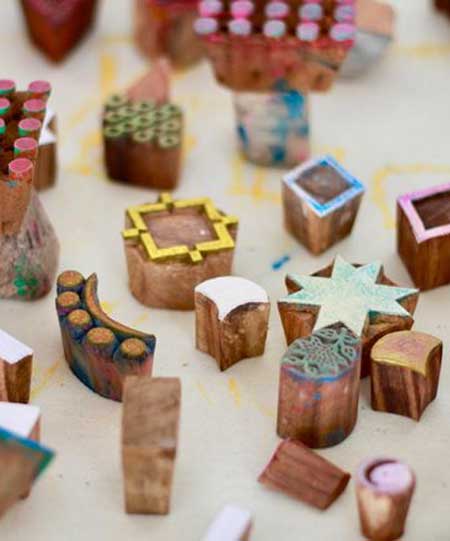

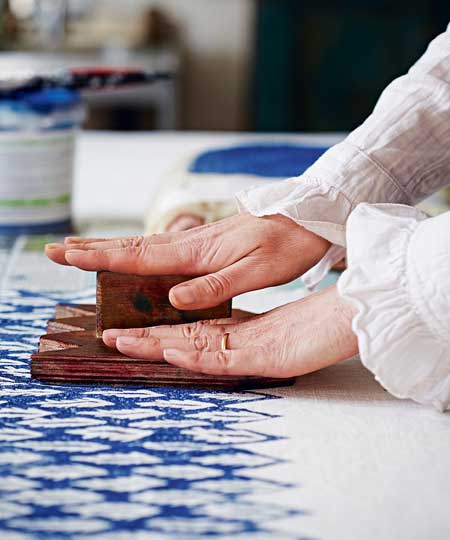

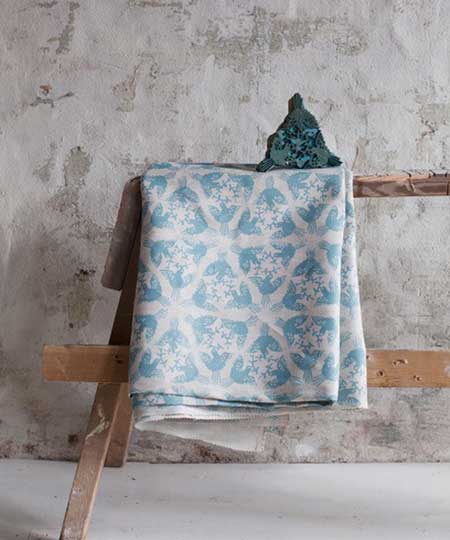

The end result is a beautiful textile that is entirely unique due to the handcrafted nature of the printing. Whether you want to fully embrace this design trend or gently introduce it into your home, the range of hand block printed fabrics is plentiful and growing.
Bold geometrics and contrasting chevrons will suit an eclectic interior with a difference, whereas smaller stylised florals and animal prints look great in Modern Country homes. Often printed in brighter, modern colourways these charming designs are also perfect for creating a stylish children’s room.
If your home is more traditional or you prefer a muted colour scheme, time-honoured designs like paisley motifs or botanical prints such as leaves and trees will complement your interiors well. These are often larger scale prints that are suited to spaces with generous proportions.
Our Favourite Block Print Fabric Designers
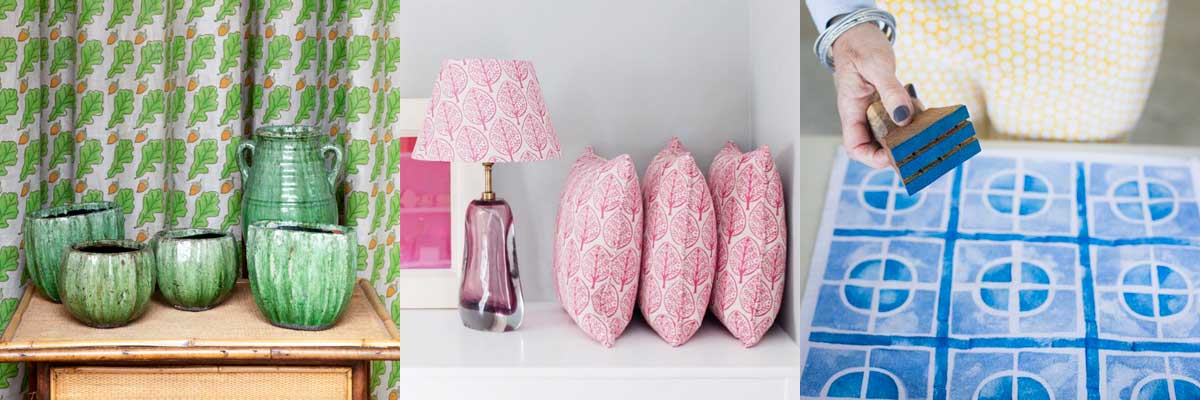

Molly Mahon
Molly Mahon is a British designer based in Sussex. With her love of the English home always in her mind, she passionately designs beautiful, unique fabrics and wallpapers that create warm and inviting interiors. Taking inspiration from the countryside around her as well as memories and mementos from her travels abroad, Molly’s hand block technique brings the materials to life with an infectious energy that transfers into your home.
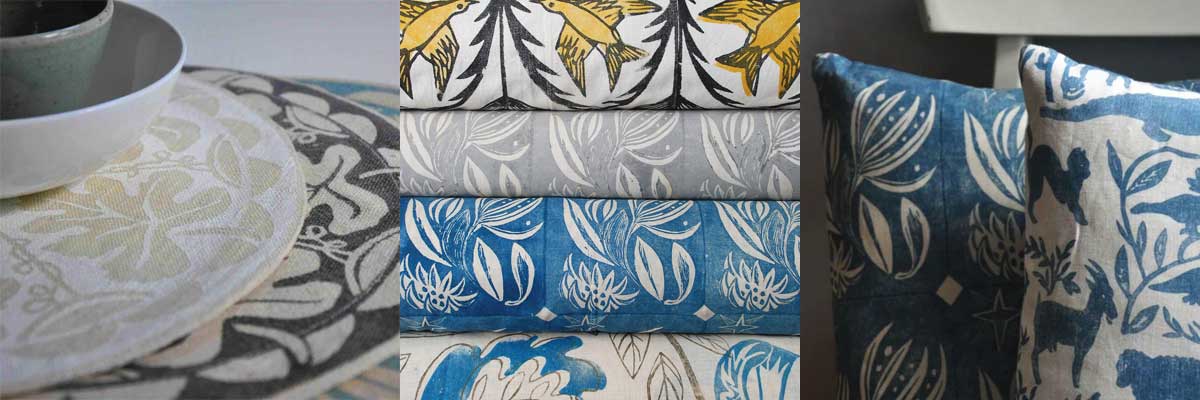

Flockhart Fabric
Flockhart Fabrics print beautiful materials that honour the imaginations of its ancestry. Created just during the years after the Second World War, Eileen Guthrie a talented textile designer and wife to sculptor George Kennethson set up studio in Northamptonshire. Taking their inspiration from the flowers, birds and plants around their home and from family holidays near the sea in Dorset the couple used lino blocks to produce the prints. Inherited by granddaughter Lucy, today the company is committed to reviving the treasure trove of designs left to her by her grandparents.
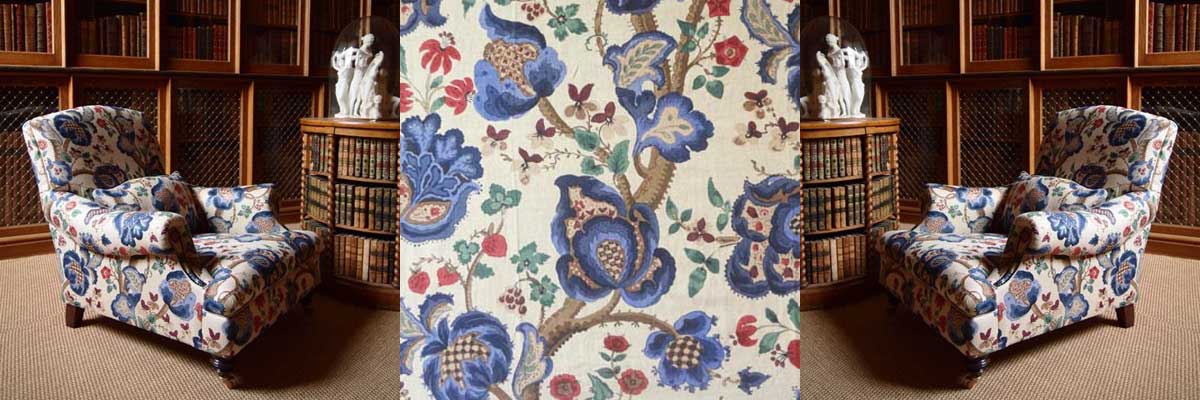

Borderline Fabrics
Flockhart Fabrics print beautiful materials that honour the imaginations of its ancestry. Created just during the years after the Second World War, Eileen Guthrie a talented textile designer and wife to sculptor George Kennethson set up studio in Northamptonshire. Taking their inspiration from the flowers, birds and plants around their home and from family holidays near the sea in Dorset the couple used lino blocks to produce the prints. Inherited by granddaughter Lucy, today the company is committed to reviving the treasure trove of designs left to her by her grandparents.
You May Also Enjoy Reading...
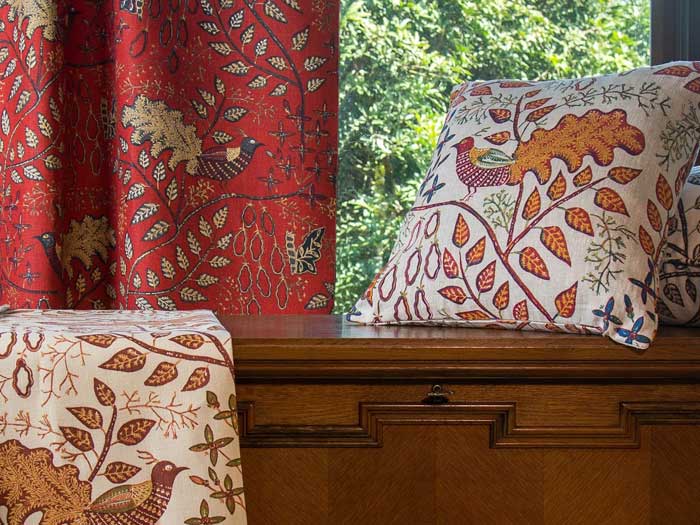

Beautiful Ways to Decorate with Linen Fabric
A very popular choice when it comes to interior decorating,linen enjoys many remarkable properties. Read on to explore more about the wonders of linen fabric and discover how to best style it in your home.
Referenes: William Morris Textiles (1983) by Linda Parry; William Morris Designs at V&A Museum; Repeal of Calico Act (1774) by Intriguing Histories.
- paypal
- visa
- mastercard
- amex

